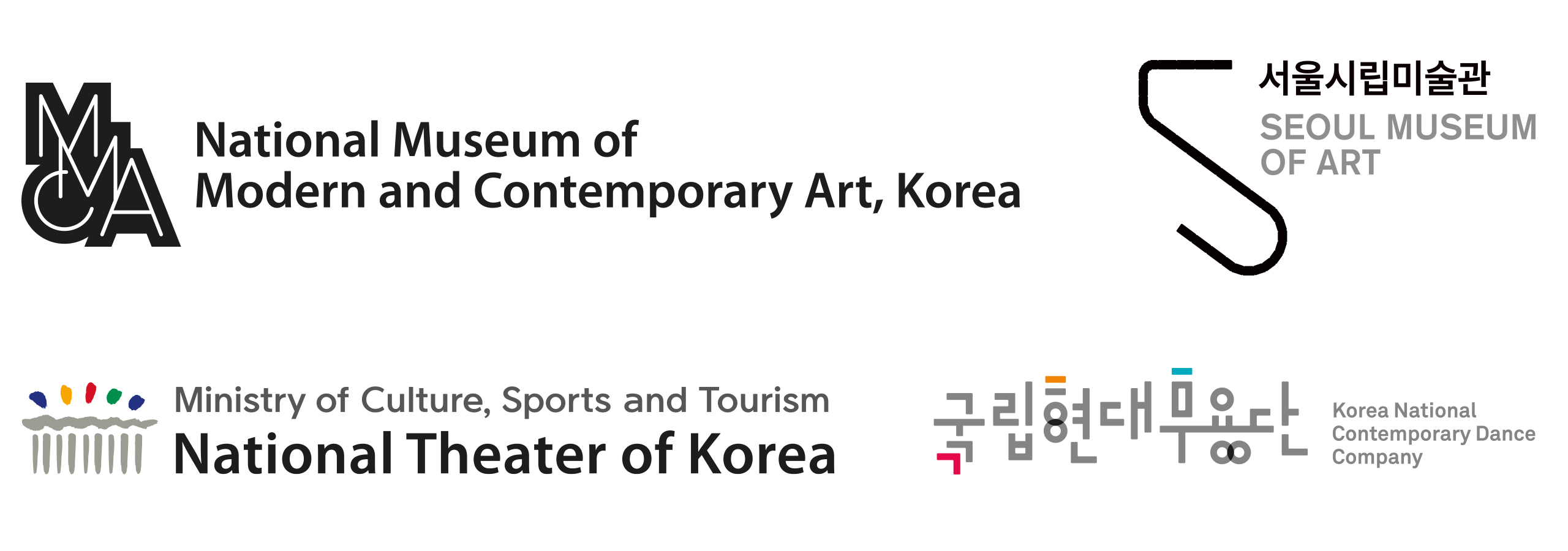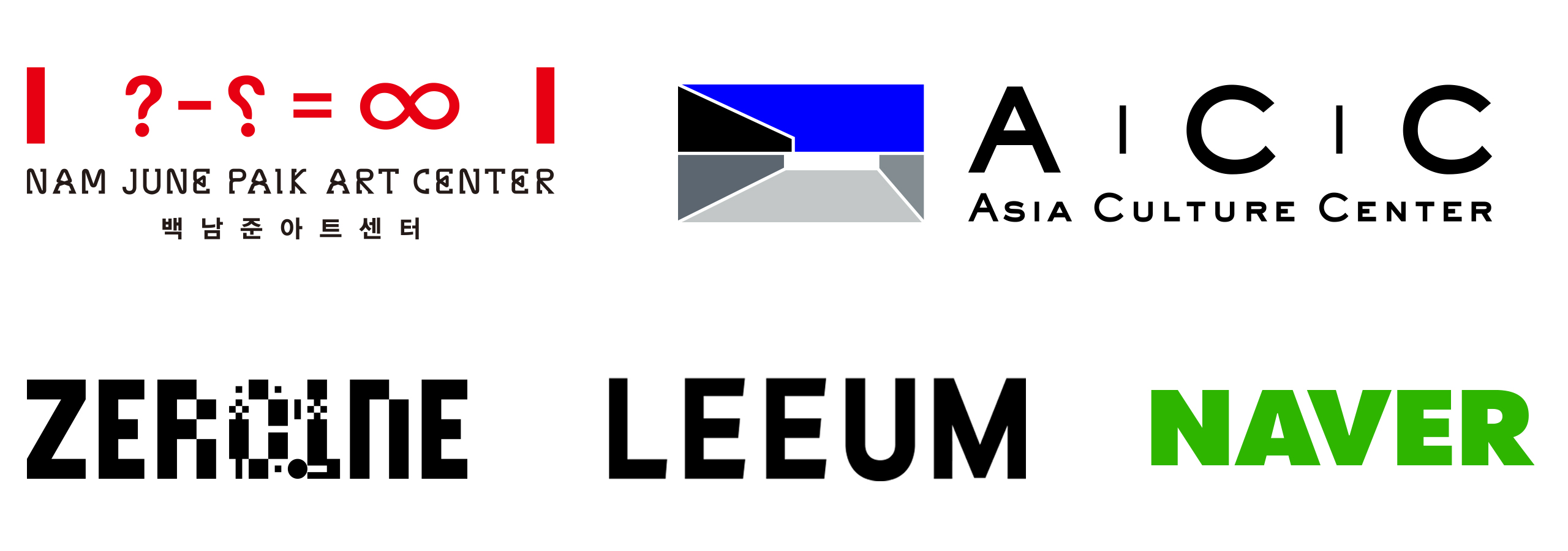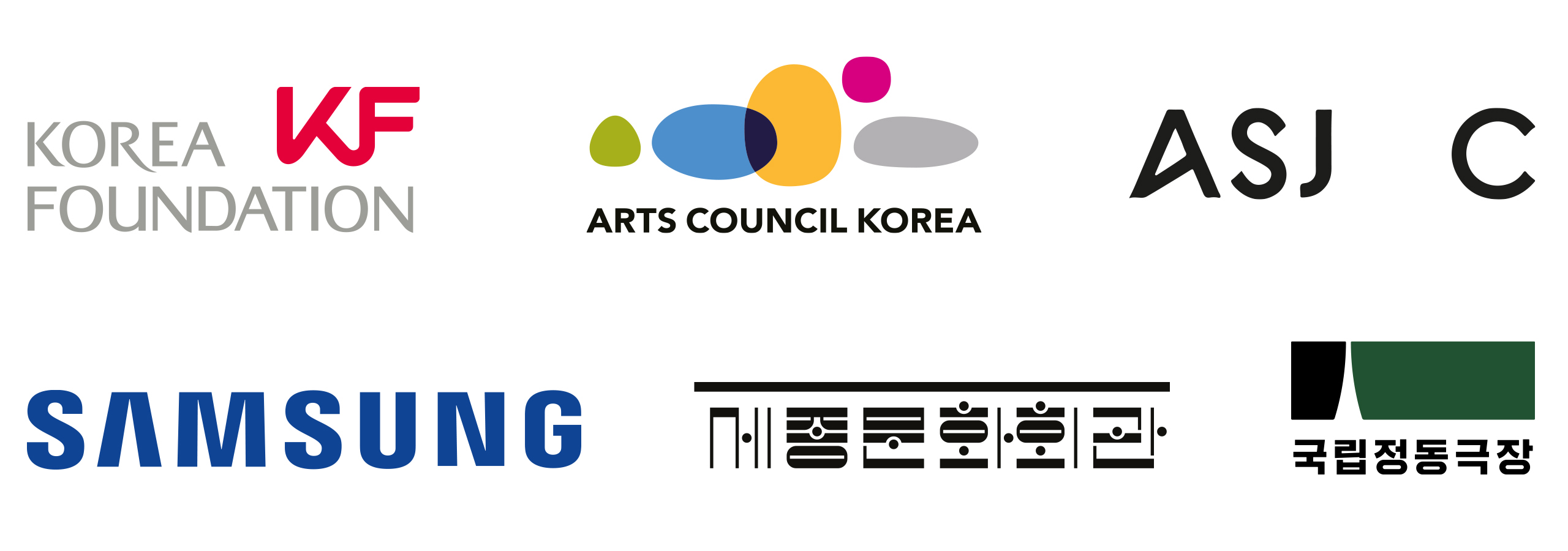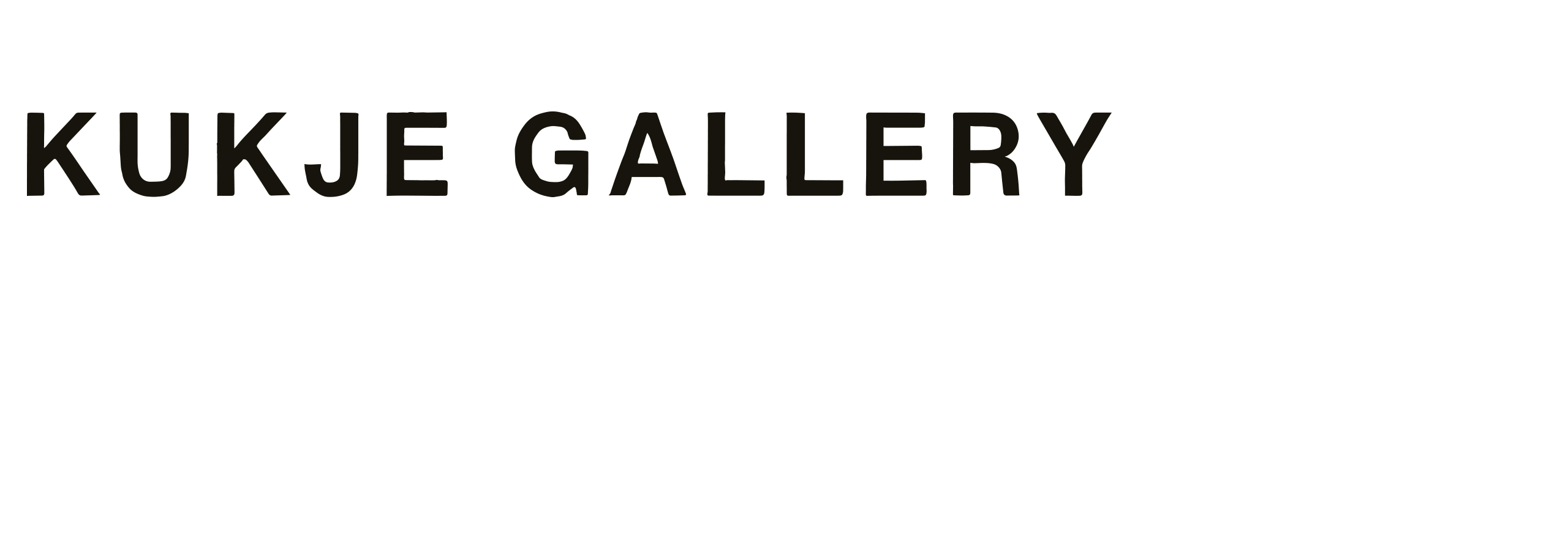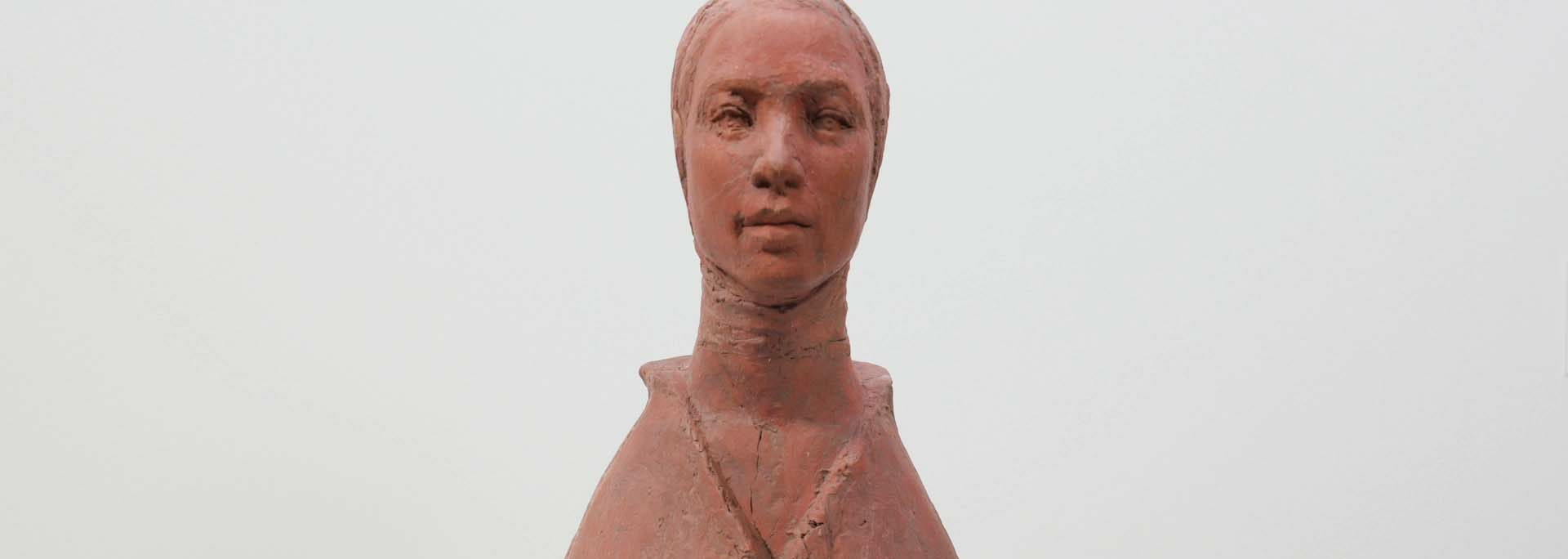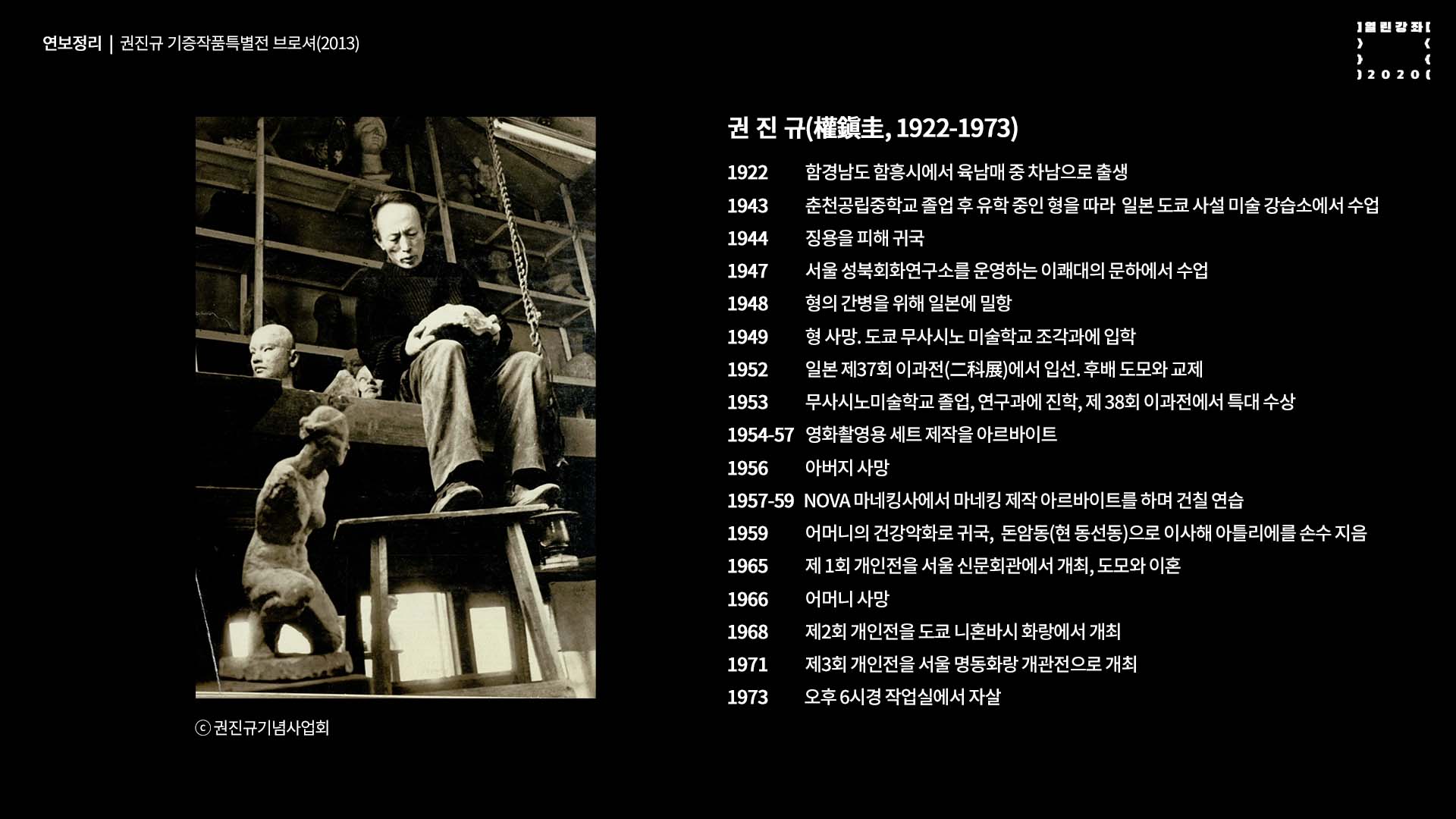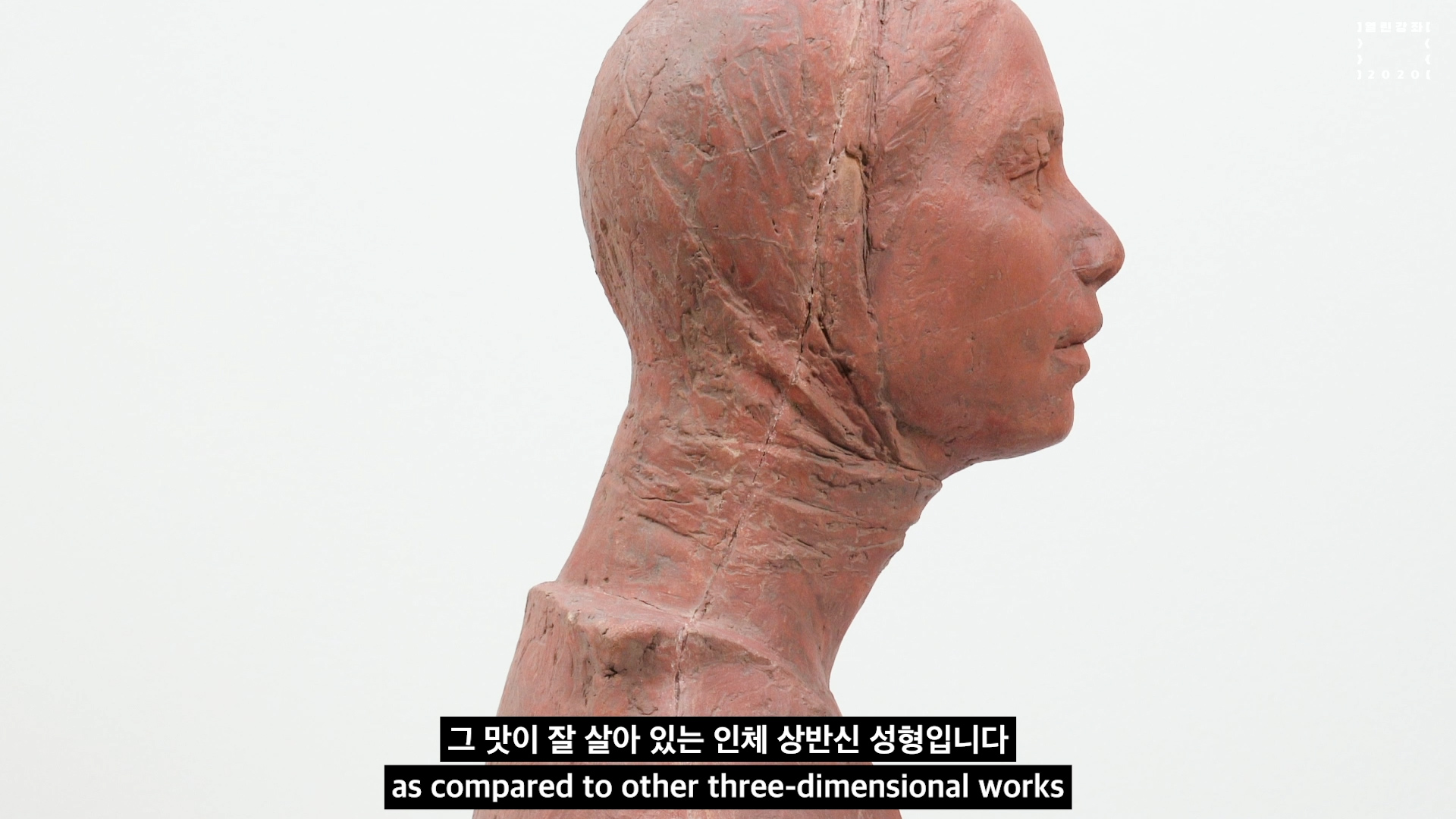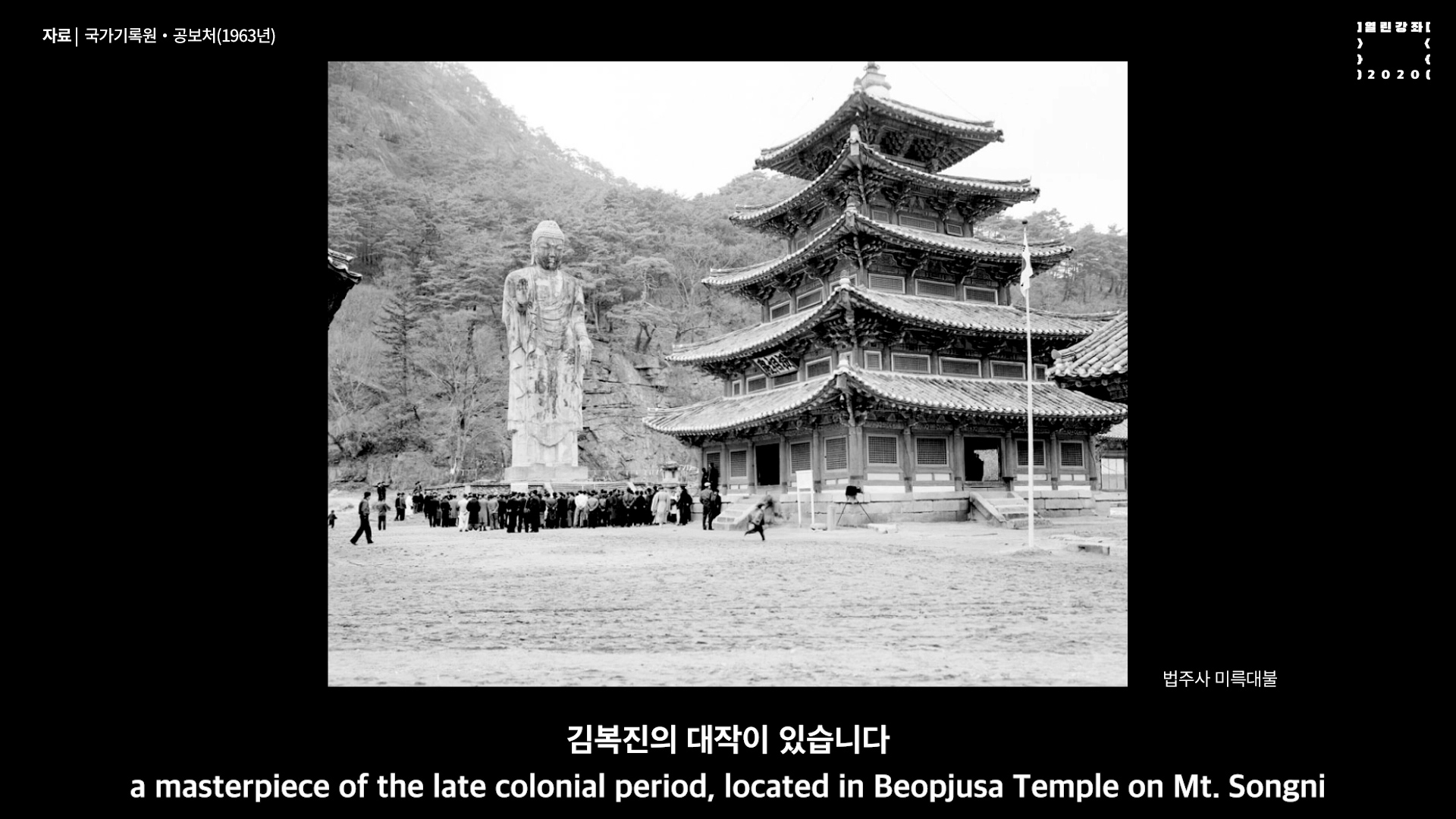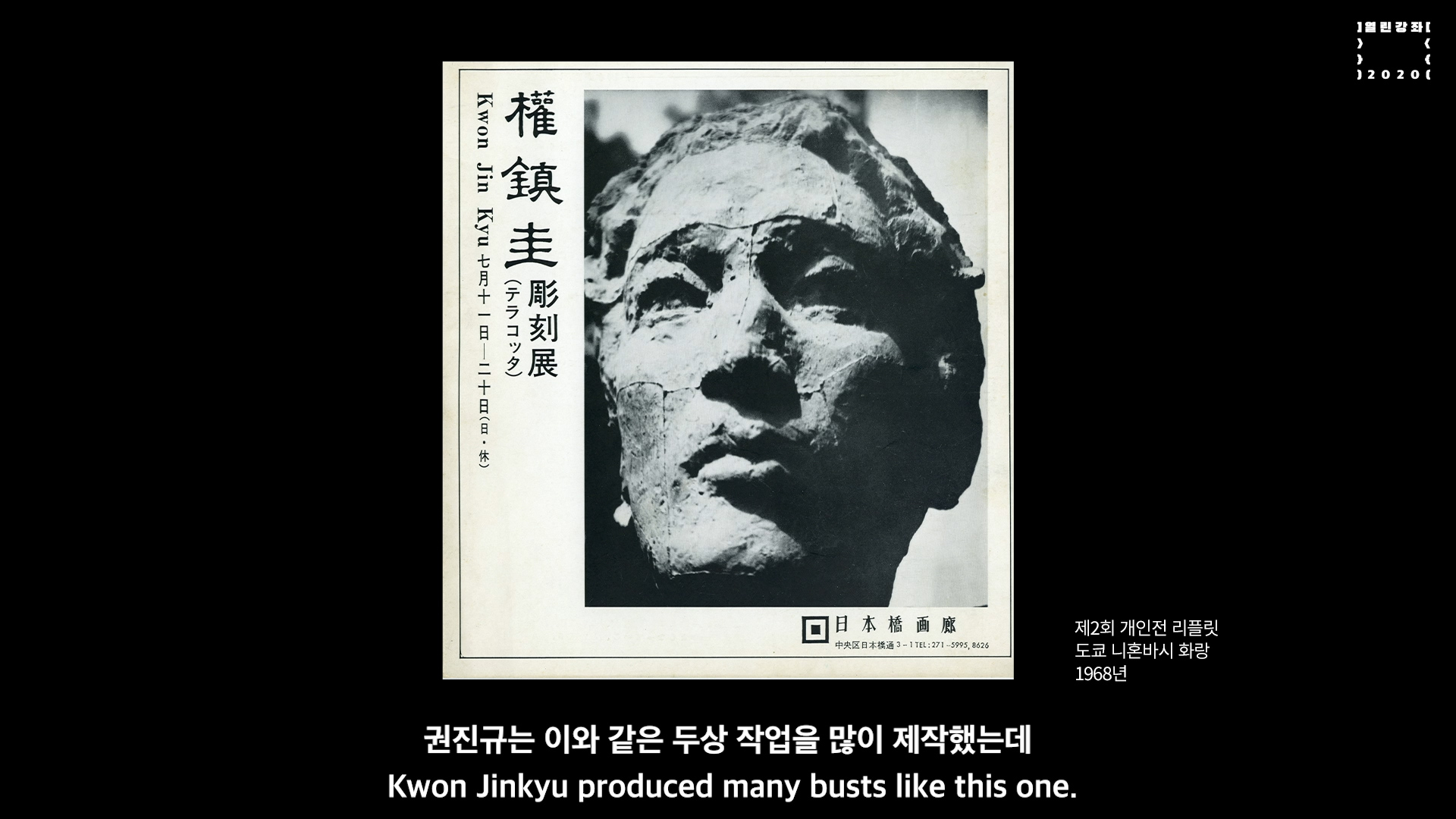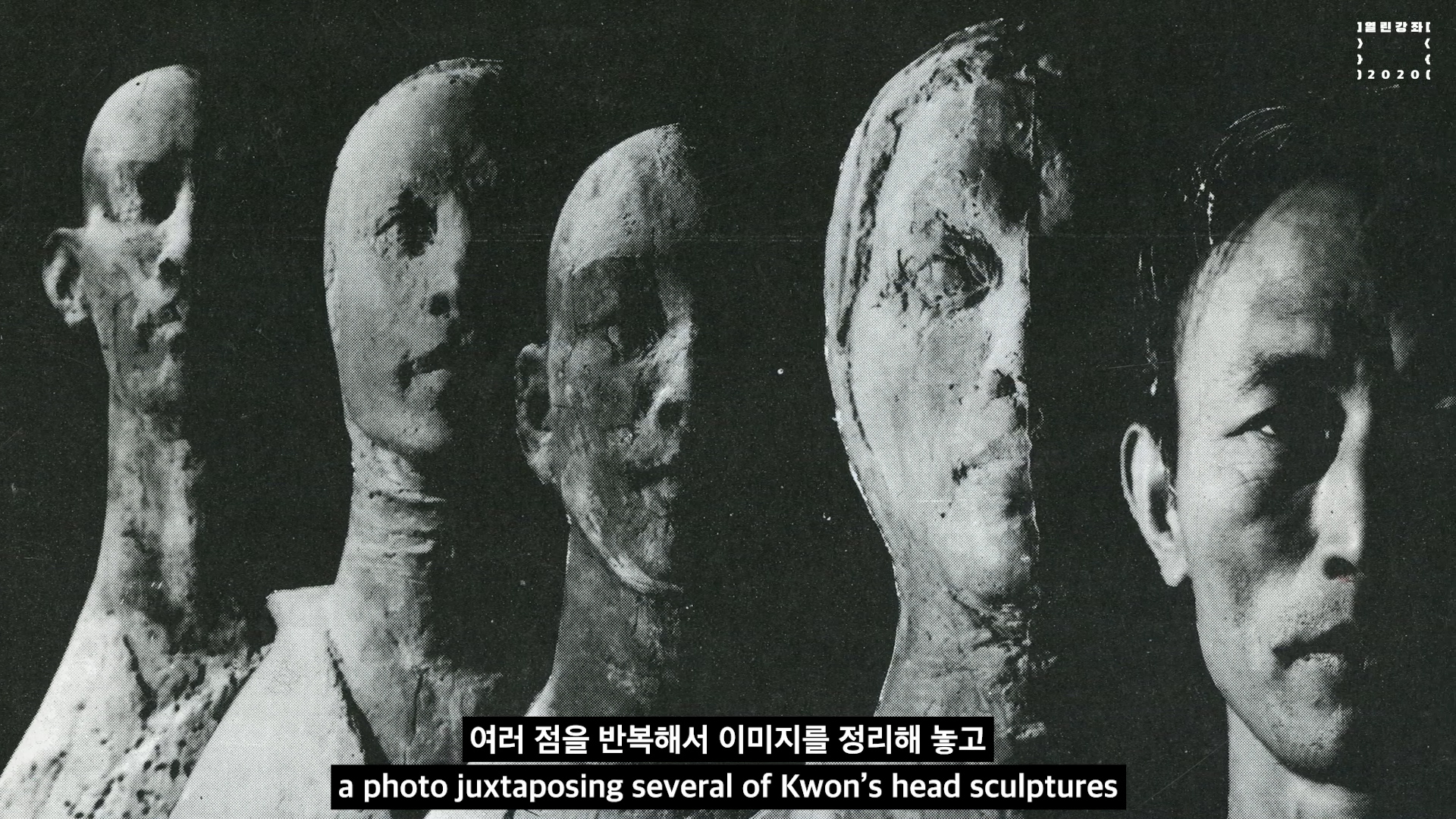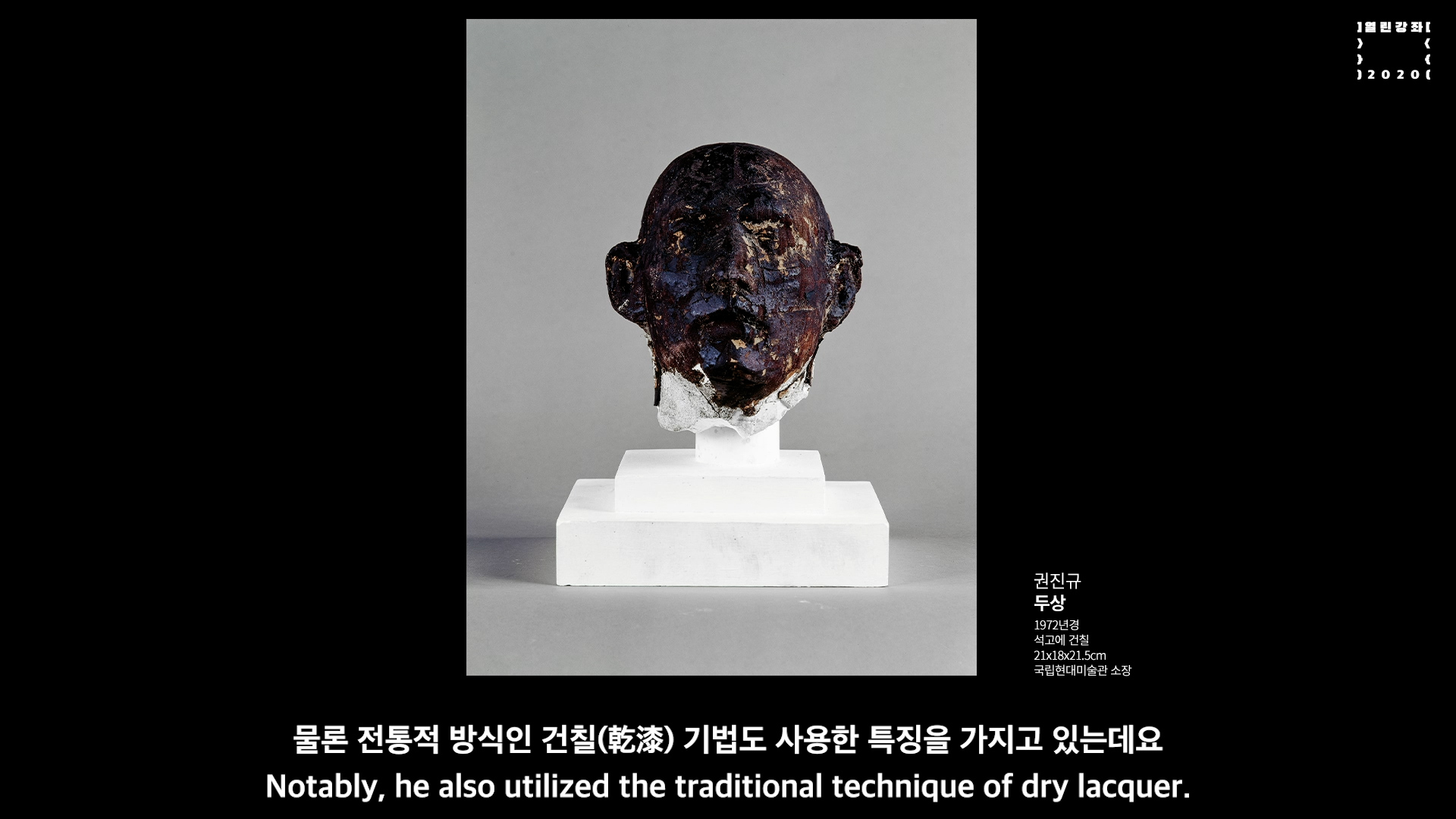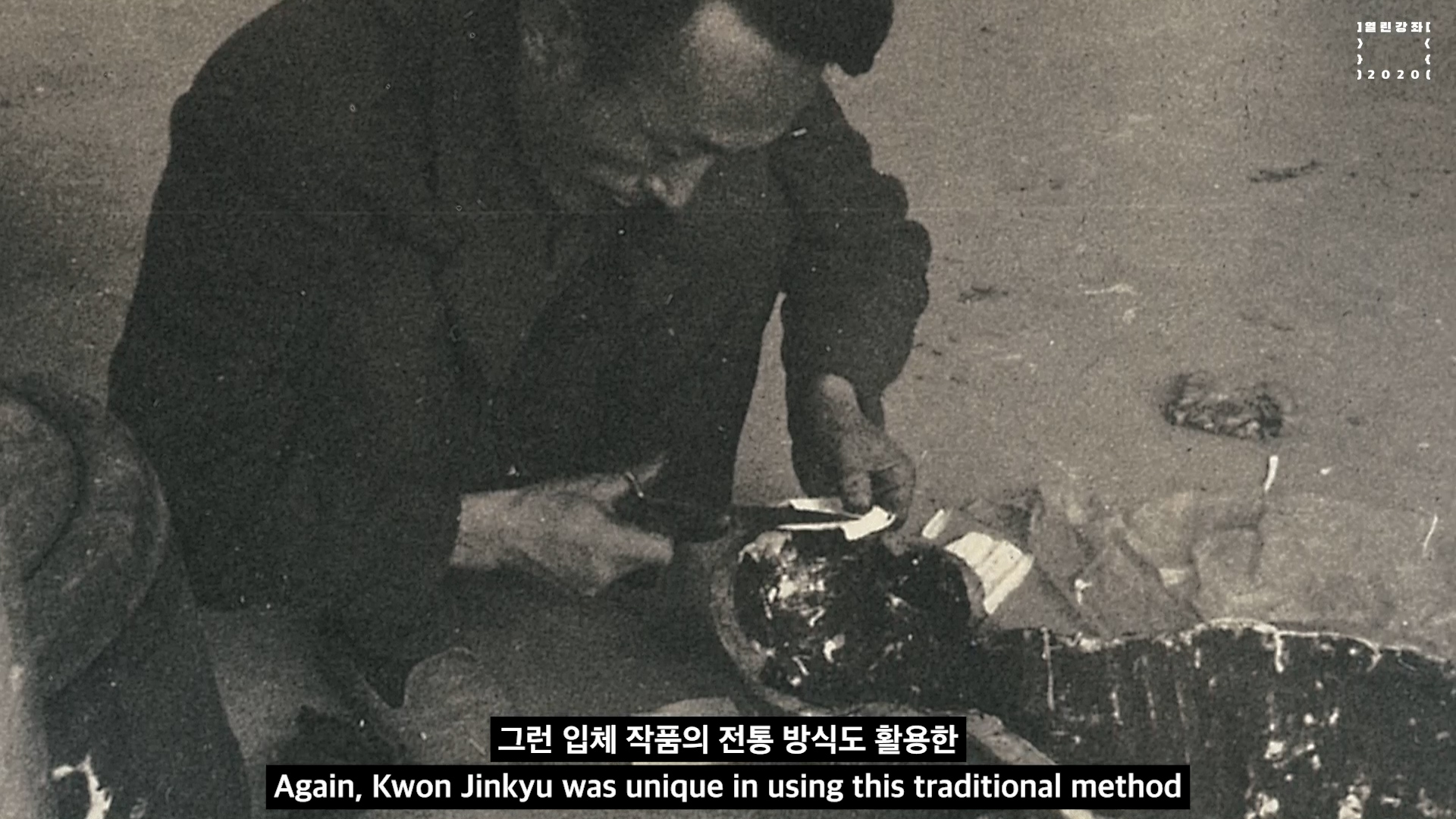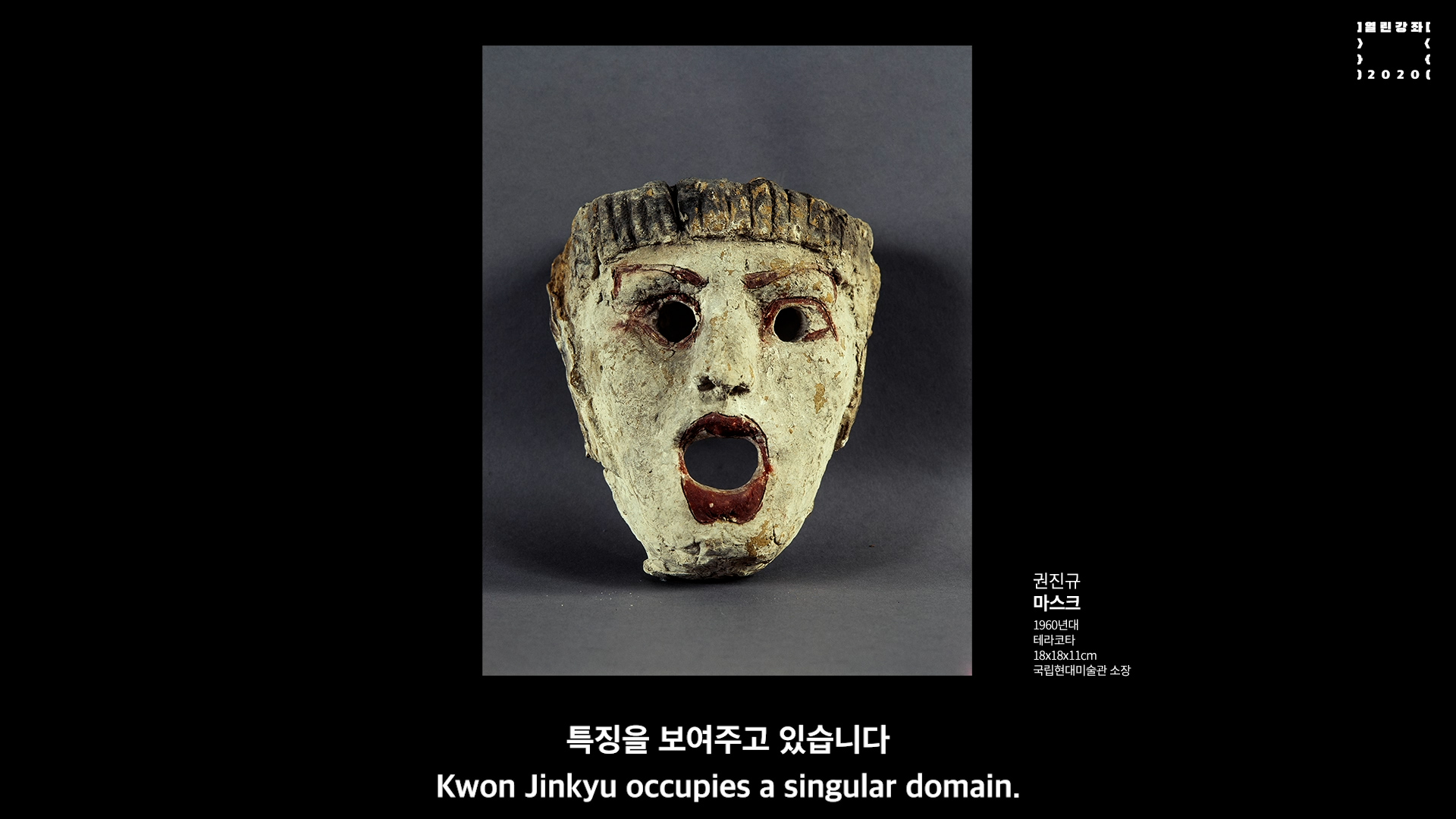Kwon Jinkyu, Jiwon’s Face, 1967
Today, we will examine a work by Kwon Jinkyu. What you are looking at here is Jiwon’s Face, produced in 1967, in the later part of his career. It is made from a unique material: terracotta. In other words, clay is shaped for firing. Notice how the exposed surface emphasizes the distinctive quality of the clay, as compared to other three-dimensional works It depicts the upper half of a body.
Looking closely, we can see that it is a frontal image of a young woman. She seems to be staring straight ahead off into the distance, with an erect neck. You can see that she’s wearing a scarf, and her facial features are well defined. Unlike similar sculptures, however, the shoulders are extremely simplified, rendered as steep lines. Overall, the figure conveys a religious impression, like some type of an ascetic. Kwon Jinkyu produced many busts like this one. Some of them were sculptures of his own head, or the heads of Buddhist nuns In fact, he produced many busts of Buddhist nuns and other young women. I remember the pamphlet from one of his solo exhibitions, , I think it was in the 1970s. The cover of the pamphlet showed a photo juxtaposing several of Kwon’s head sculptures with an image of his own face in the center. I guess it was meant to equate his face with the women’s faces, or the faces of Buddhist nuns. So we can guess that his intention with these busts was to capture the resonance of his most sincere inner mind.


